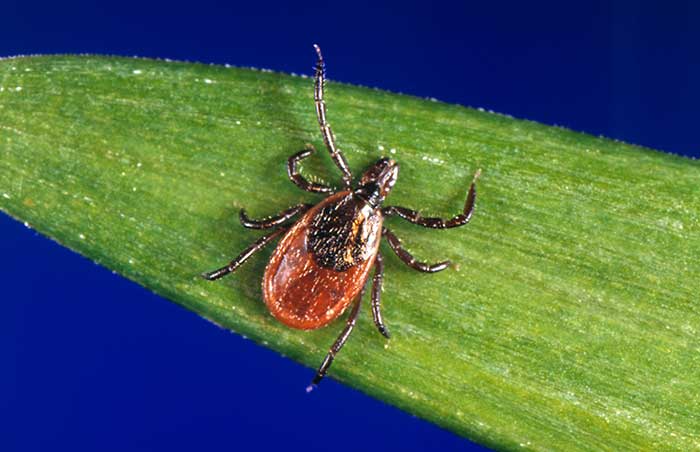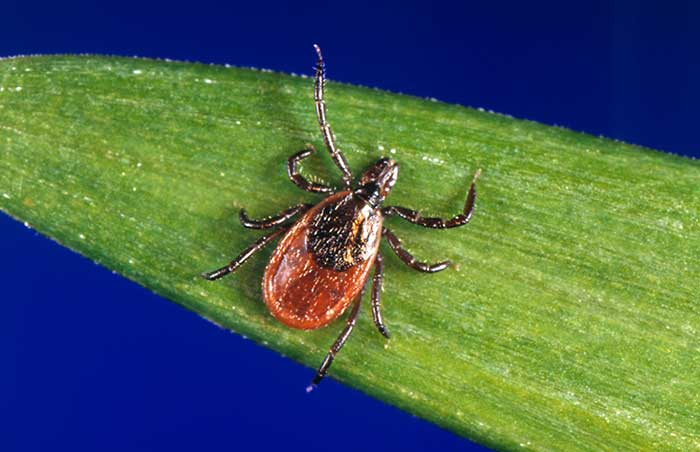Ticks and Lyme disease some do’s and don’t


Lyme disease is the most common vector-borne disease in the United States. Lyme disease is caused by the bacterium Borrelia burgdorferi and rarely, Borrelia mayonii. It is transmitted to humans through infected blacklegged ticks. Some symptoms include fever, fatigue, headache and a skin rash called erythema migrans. If left untreated, infection can spread to joints, heart, and nervous system. Lyme disease can be diagnosed physical findings, lab tests, and if you have exposure to infected ticks. Most cases of Lyme disease can be treated successfully with a few weeks of antibiotics. Some steps you can take to prevent Lyme disease are using insect repellent, removing ticks promptly, applying pesticides, and reducing tick habitat. The ticks that transmit Lyme disease can occasionally transmit other tickborne diseases as well. When health care providers are assessing patients for Lyme disease, they should consider the signs and symptoms of Lyme disease and if that the patient has been exposed to infected blacklegged ticks.
Some early signs of Lyme disease:
• Fever, chills, headache, fatigue, muscle and joint aches, and swollen lymph nodes
• Erythema migrans (EM) rash (bull’s eye appearance but not always)
Some late signs of Lyme disease:
- Severe headaches and neck stiffness
- Additional EM rashes on other areas of the body
- Facial palsy (loss of muscle tone or droop on one or both sides of the face)
- Arthritis with severe joint pain and swelling, particularly the knees and other large joints.
- Intermittent pain in tendons, muscles, joints, and bones
- Heart palpitations or an irregular heart beat
- Episodes of dizziness or shortness of breath
- Inflammation of the brain and spinal cord
- Nerve pain
- Shooting pains, numbness, or tingling in the hands or feet (cdc.gov)
If you find a tick attached to your skin, simply remove the tick as soon as possible. There are several tick removal devices out there, but a plain set of tweezers will work just fine. Some helpful tips on how to remove a tick:
- Use clean tweezers to grasp the tick as close to the skin’s surface as possible.
- Pull upward with steady, even pressure. Do not twist or jerk the tick; this can cause the mouth-parts to break off and remain in the skin. If this happens, remove the mouth-parts with tweezers. If you cannot remove the mouth easily with tweezers, leave it alone and let the skin heal.
- After removing the tick, clean the bite area and your hands with rubbing alcohol or soap and water.
- Never crush a tick with your fingers. Dispose of a live tick by
- Putting it in alcohol
- Placing it in a sealed bag/container
- Wrapping it tightly in tape
- Flushing it down the toilet (cdc.gov)
If you develop a rash or fever within several weeks of removing a tick, see your doctor and let them know about your recent tick bite, when the bite occurred and where you most likely got it. Reducing exposure to ticks is the best defense against Lyme disease, Rocky Mountain spotted fever, and other tick borne infections. You and your family can take several steps to prevent and control Lyme disease. One step is to talk to your veterinarian about tick prevention for your dogs. Clear tall grass and brush around your property and mow the lawn frequently. Treating your clothing and outside gear with products that prevent ticks and you can buy clothing and gear that are pretreated with preventives. Always check you clothing and pets for ticks. Ticks can ride into the home on clothing and pets, then attach to a person later, so carefully examine pets, coats, and gear.Shower and check your body for ticks after being outdoors. Conduct a full body check upon return from potentially tick-infested areas, including your own backyard. Use a hand-held or full-length mirror to view all parts of your body. Check these parts of your body and your child’s body for ticks:
- Under the arms • Back of knees
- In and around the ears and hair • Between the legs
- Inside belly button • Around the waist (cdc.gov)
In most cases, a tick must be attached for 36 to 48 hours or more before the Lyme disease bacterium can be transmitted. If you remove a tick quickly (within 24 hours), you can greatly reduce your chances of getting Lyme disease. (cdc.gov)
Early diagnosis and proper antibiotic treatment of Lyme disease is important and can help prevent late Lyme disease.
If you think you may have been exposed to a tick bite, contact your health care provider for further information and testing.

Michelle Marcum, BSN, RN
Public Health Nurse









